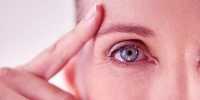It’s a busy summer for the clubhouse. The hit social audio app has launched a new messaging feature and an Android app in the last few months and now the company is focusing on enhancing its core audio experience. Clubhouse announced on Sunday that the app’s rooms will now be added to local audio to give listeners the rich feeling of chatting directly with a group of others. TechCrunch talked about the decision to add spatial audio to Justin Uberti of the clubhouse, which has the same effect as making different speakers sound as if they were coming from different physical positions instead of just one spot.
Uberti joined Google in May as head of streaming technology at Clubhouse where he created Google Duo, led the Hangouts team, and most recently worked at Google’s cloud gaming platform Stadia. Uberti also developed the WebRTC standard on which the clubhouse was built. “One of the things you perceive in these group audio settings is that you don’t feel like being in a physical place,” Uberti said.
Although clubhouse and other voice chat apps bring people together in virtual social settings, the audio usually seems relatively flat, as it emanates from a single central location. But to imitate the clubhouse in the assembly in person, you will hear audio from around the room, to the left and right of the audience in different places where the speakers can ask their questions. To bring out new audio tricks, Clubhouse Second Life creator Philip Rosedale’s local audio company is integrating an API from High Fidelity and mixing it with the company’s own custom audio processing tuned for the chat app.
High Fidelity’s HRTF technology, meaning “Head-Related Transfer Function”, maps speech to various virtual locations, adds a time delay between stereo channels, and high and low frequencies replicate the sound entering the ear, depending on the origin of the sound. The results, long used in social VR, give virtual social experiences a sense of physical presence that has been pulling good records for ages.
Think of listening to Pink Floyd’s Dark Side of the Moon in stereo with good headphones but instead of playing sound effects and instruments around your head, you’re talking to people arranged in a virtual space.















